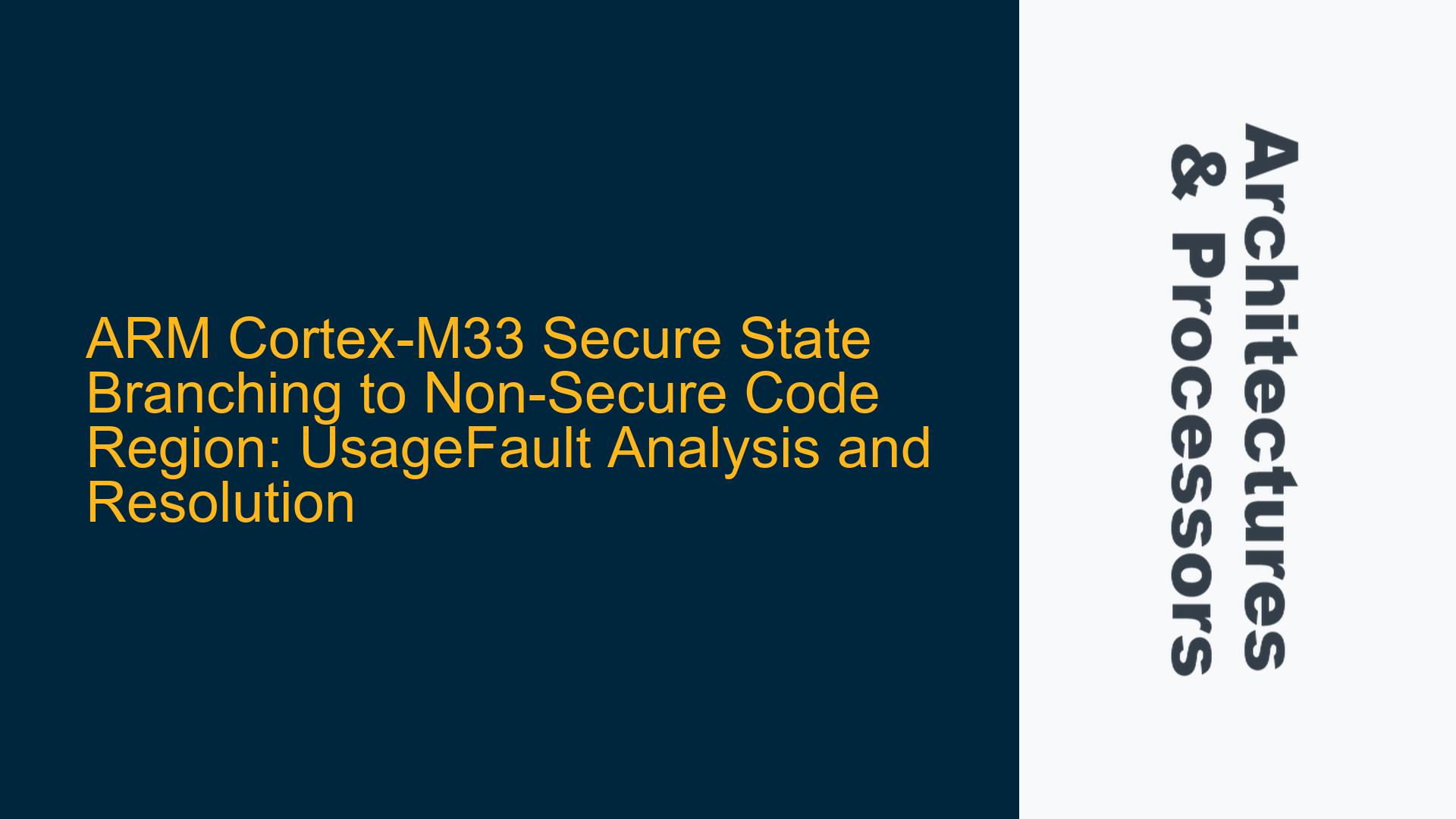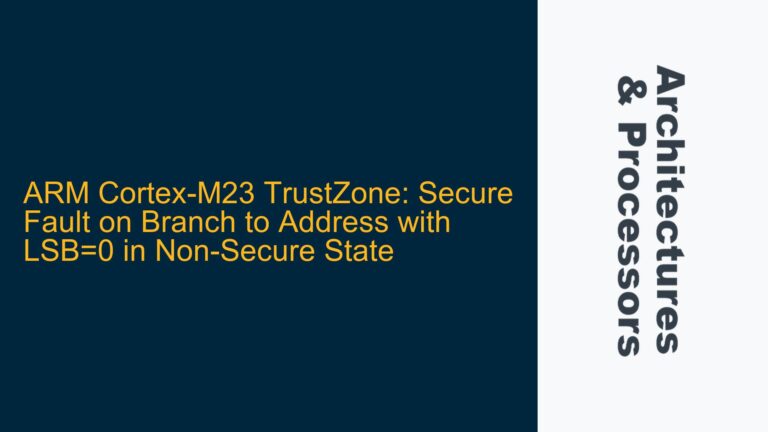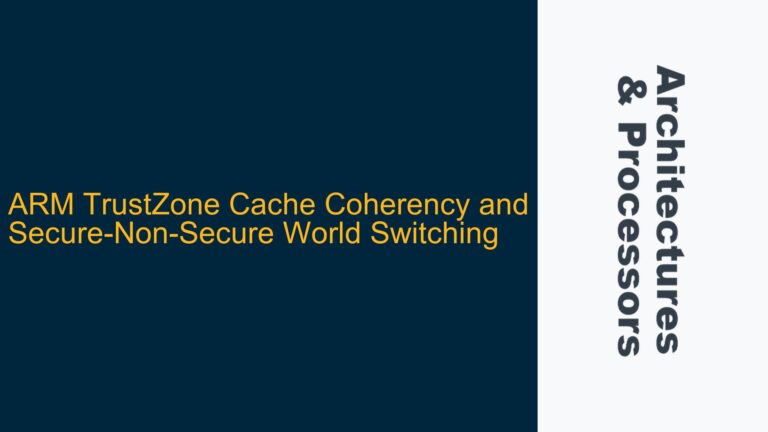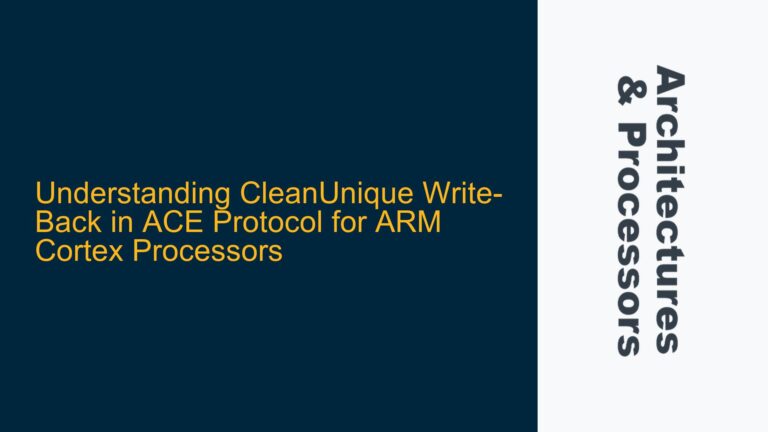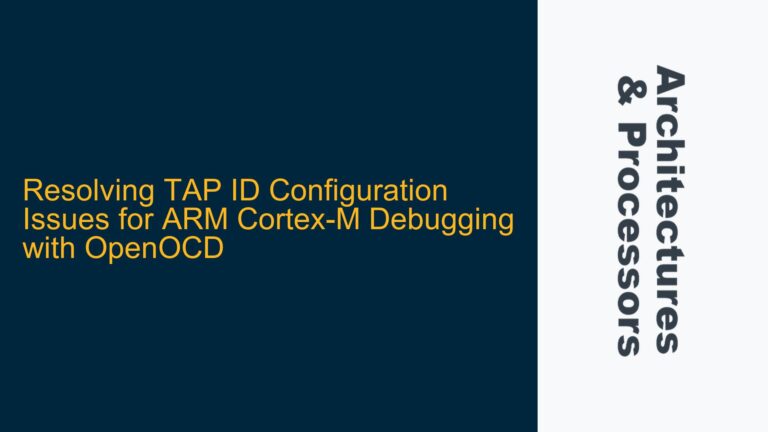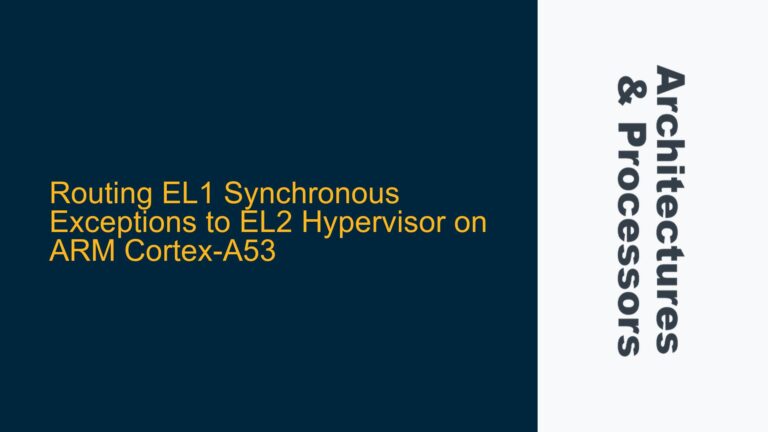ARM Cortex-M33 BX Instruction Behavior in Secure State
The ARM Cortex-M33 processor, based on the ARMv8-M architecture, introduces a robust security model that partitions code execution into Secure and Non-Secure states. This partitioning is enforced by the Memory Protection Unit (MPU) and the Security Attribution Unit (SAU), which define memory regions as Secure or Non-Secure. When executing in the Secure state, the processor enforces strict rules to prevent unauthorized access to Non-Secure resources. One such rule governs the behavior of the BX (Branch Exchange) instruction when attempting to branch from Secure code to a Non-Secure code region.
The BX instruction is typically used to perform a branch to an address specified in a register. In the context of ARMv8-M, the BX instruction does not inherently respect the security state of the target address. When executed in the Secure state, the BX instruction does not automatically transition the processor to the Non-Secure state, even if the target address resides in a Non-Secure memory region. This behavior contrasts with the BXNS (Branch Exchange Non-Secure) instruction, which explicitly transitions the processor to the Non-Secure state when branching to a Non-Secure address.
The ARMv8-M architecture specifies that attempting to branch from Secure code to a Non-Secure code region using the BX instruction results in a UsageFault. However, the specific type of UsageFault—Secure or Non-Secure—depends on the processor’s configuration and the context in which the fault occurs. Understanding the fault behavior is critical for developers working with secure systems, as it impacts fault handling, debugging, and system reliability.
Secure vs. Non-Secure UsageFault: Context and Implications
The distinction between Secure and Non-Secure UsageFaults is rooted in the ARMv8-M security model. Secure UsageFaults are triggered when a fault occurs in the Secure state, while Non-Secure UsageFaults occur in the Non-Secure state. The fault type determines which fault handler is invoked and how the fault is processed. In the case of a BX instruction attempting to branch to a Non-Secure code region from the Secure state, the fault type depends on the following factors:
-
Security State of the Faulting Instruction: Since the BX instruction is executed in the Secure state, the fault is initially classified as a Secure UsageFault. This classification ensures that the Secure fault handler can intercept and process the fault before it propagates to the Non-Secure state.
-
Target Address Security Attribution: The target address of the BX instruction resides in a Non-Secure memory region. The SAU and MPU enforce the security attribution of memory regions, and any violation of these attributions triggers a fault. In this case, the fault is caused by an attempt to access a Non-Secure resource from the Secure state.
-
Fault Handling Configuration: The ARMv8-M architecture allows developers to configure fault handling behavior through the Secure Fault Mask Register (SFMASK) and the Non-Secure Fault Mask Register (NSFMASK). These registers control whether faults are handled in the Secure or Non-Secure state. If the Secure fault handler is configured to handle UsageFaults, the fault will be processed in the Secure state. Otherwise, the fault may escalate to the Non-Secure state.
The interaction between these factors determines whether the fault is classified as a Secure or Non-Secure UsageFault. In most cases, the fault will be a Secure UsageFault, as the faulting instruction is executed in the Secure state. However, if the Secure fault handler is not configured to handle UsageFaults, the fault may propagate to the Non-Secure state, resulting in a Non-Secure UsageFault.
Resolving Secure State Branching Violations: Best Practices and Solutions
To address the issue of Secure state branching violations and ensure robust fault handling, developers should implement the following best practices:
-
Use BXNS for Non-Secure State Transitions: The BXNS instruction is specifically designed for transitioning from the Secure state to the Non-Secure state. Unlike the BX instruction, BXNS respects the security state of the target address and ensures a clean transition between security states. Developers should replace all instances of BX with BXNS when branching to Non-Secure code regions from the Secure state.
-
Configure Fault Handling Appropriately: The Secure fault handler should be configured to handle UsageFaults to prevent faults from propagating to the Non-Secure state. This configuration ensures that Secure state violations are caught and processed within the Secure state, maintaining system security and reliability. The SFMASK register should be used to enable UsageFault handling in the Secure fault handler.
-
Validate Target Address Security Attribution: Before executing a branch instruction, developers should validate the security attribution of the target address. This validation can be performed using the SAU and MPU configuration registers to ensure that the target address is accessible from the current security state. If the target address is in a Non-Secure region, the BXNS instruction should be used instead of BX.
-
Implement Fault Handling and Debugging Mechanisms: Robust fault handling and debugging mechanisms are essential for identifying and resolving Secure state branching violations. Developers should implement fault handlers that log fault information, including the fault type, faulting instruction, and target address. This information can be used to diagnose and fix issues during development and testing.
-
Leverage ARMv8-M Security Features: The ARMv8-M architecture provides several features to enhance system security, including the SAU, MPU, and TrustZone for ARMv8-M. Developers should leverage these features to enforce security policies and prevent unauthorized access to Non-Secure resources. The SAU and MPU should be configured to define Secure and Non-Secure memory regions, and TrustZone should be used to isolate Secure and Non-Secure code.
By following these best practices, developers can ensure that Secure state branching violations are handled appropriately and that system security is maintained. The use of BXNS for Non-Secure state transitions, combined with proper fault handling and security configuration, will prevent UsageFaults and ensure reliable system operation.
Detailed Analysis of ARMv8-M Security Model and Fault Handling
To fully understand the behavior of the BX instruction in the Secure state and the resulting UsageFault, it is necessary to delve into the ARMv8-M security model and fault handling mechanisms. The ARMv8-M architecture introduces a dual-state security model, where the processor operates in either the Secure or Non-Secure state. This model is enforced by the SAU and MPU, which define the security attribution of memory regions and control access to these regions based on the current security state.
The SAU is responsible for defining Secure and Non-Secure memory regions at a coarse granularity, while the MPU provides finer-grained control over memory access permissions. Together, these units ensure that Secure code cannot access Non-Secure resources without explicit permission. When a Secure state branching violation occurs, the SAU and MPU detect the violation and trigger a UsageFault.
The fault handling mechanism in ARMv8-M is designed to handle faults in both the Secure and Non-Secure states. The Secure fault handler is responsible for processing faults that occur in the Secure state, while the Non-Secure fault handler processes faults in the Non-Secure state. The fault type (Secure or Non-Secure) is determined by the security state of the faulting instruction and the fault handling configuration.
In the case of a BX instruction attempting to branch to a Non-Secure code region from the Secure state, the fault is initially classified as a Secure UsageFault. The Secure fault handler is invoked to process the fault, and the fault information is logged for debugging purposes. If the Secure fault handler is not configured to handle UsageFaults, the fault may propagate to the Non-Secure state, resulting in a Non-Secure UsageFault.
Practical Example: Secure State Branching Violation and Fault Handling
Consider a practical example where a Secure state application attempts to branch to a Non-Secure code region using the BX instruction. The following steps outline the sequence of events and the resulting fault handling behavior:
-
Secure State Execution: The processor is executing in the Secure state, and the application attempts to branch to a Non-Secure code region using the BX instruction.
-
Security Attribution Check: The SAU and MPU check the security attribution of the target address. Since the target address resides in a Non-Secure memory region, the security check fails, and a UsageFault is triggered.
-
Fault Classification: The fault is classified as a Secure UsageFault, as the faulting instruction is executed in the Secure state.
-
Fault Handling: The Secure fault handler is invoked to process the fault. The fault handler logs the fault information, including the fault type, faulting instruction, and target address.
-
Fault Resolution: The fault handler resolves the fault by either correcting the target address or terminating the faulting process. If the fault handler is not configured to handle UsageFaults, the fault propagates to the Non-Secure state, resulting in a Non-Secure UsageFault.
This example illustrates the importance of proper fault handling and security configuration in preventing Secure state branching violations. By configuring the Secure fault handler to handle UsageFaults and using the BXNS instruction for Non-Secure state transitions, developers can ensure that Secure state branching violations are handled appropriately and that system security is maintained.
Conclusion
The behavior of the BX instruction in the Secure state of the ARM Cortex-M33 processor is governed by the ARMv8-M security model and fault handling mechanisms. Attempting to branch to a Non-Secure code region using the BX instruction results in a UsageFault, which is typically classified as a Secure UsageFault. However, the fault type may change to a Non-Secure UsageFault if the Secure fault handler is not configured to handle UsageFaults.
To prevent Secure state branching violations and ensure robust fault handling, developers should use the BXNS instruction for Non-Secure state transitions, configure the Secure fault handler to handle UsageFaults, and validate the security attribution of target addresses before executing branch instructions. By following these best practices and leveraging the security features of the ARMv8-M architecture, developers can maintain system security and reliability while avoiding common pitfalls associated with Secure state branching.
